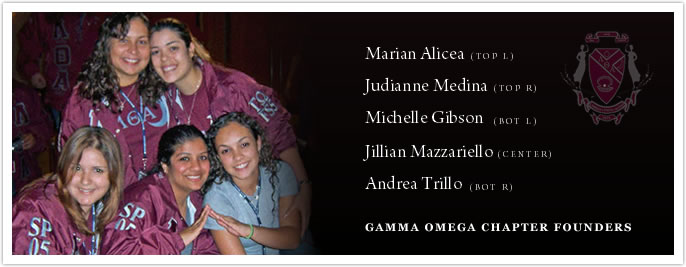“Our sisterhood: The first nine Latina women at Tech”
“When groups of internationals tend to congregate together and speak their own language, this arouses suspicion on the part of Americans… Most people do not appreciate being around people who are speaking a language that they do not understand”.1 This was part of the international student information packet that was given to all non-US citizens upon their arrival at Georgia Tech in the 1970s. Leaving the place you grew up behind, in search of better opportunities, getting into a great university, excited to learn and expand only to be shunned for speaking your own language before you even had the opportunity to.
One of my peers, when reviewing this article, read that first paragraph and said “The quote is quite honestly shocking. To suppress an individual’s culture and language in order to prevent suspicion in others is something we could not imagine today.” However I do not have to imagine it, I live it. One of my close friends on campus, a fellow international student from the Dominican Republic, is currently being investigated by the Office of Student Integrity for speaking Spanish with a friend right before an exam. An American thought that was “suspicious” enough to file a complaint against her, which might permanently affect her student record.
In the same International student information packet of the 70s, along with information about visas, jobs, classes another section stood out to me. It said, “Of all the peoples in the world, probably the ones most concerned about personal cleanliness– believe it or not– are the Americans… most Americans bathe once a day and if this is not possible, at least once every two or three days”.1 My country has similar weather to that of the Atlanta summer, so when I first arrived here it was shocking to me that Americans only showered once a day, so when I read that sentence, I could not help but laugh. Keep in mind this document was given to every international student and so they could feel first-hand Americans’ sense of superiority, and ability to make every statement a condescending one.
It’s always difficult to talk about Latinoamerica with those from first-world countries. If I speak about the struggles, the American’s view of poor Latin America, pitiful Latin America, and sad Latin America stays alive. If I speak about the good things, I am creating a narrative that may only be true to those privileged enough to enjoy it. American imperialism has caused my country and many others in Latin America great pain. Most Latin American international students here chose to come to either escape that or learn enough to go back and change it. However, it is heartbreaking that the tools and the power to solve the world’s most pressing problems, like poverty and climate change, lie in the hands of those that most contribute to their causes. The truth is Latin America is a beautiful land, full of many countries and cultures. Centuries of imperialism and colonialism that continue today have hurt it so much, with women especially suffering the consequences.
At this college, women were first admitted to degree-awarding programs in the fall of 1952.2 More than two decades later, in 1976, was the first time a Latin American woman came to Georgia Tech. Nine of them came to be exact.1
These are their stories:
Eva Margarita Rovira Mejia was a Salvadorian lady majoring in Information and Computer Science. She had at least four brothers of which two studied engineering. In 2006, she started a non-profit in El Salvador named Fundación Ciencia Ingeniería y Tecnología, which translates to Science, Engineering and Technology Foundation. This organization had the objective of promoting science, engineering, and technology in the Central American region, improving the education methodology of these areas, and encouraging the use of technology in the problem resolution of each area’s most serious concerns. She was the president of this non-profit, which she started with another Georgia Tech student, Antonio Jose Dieck Assad, who was an international student from Mexico.3

Betsy Ines Aquin was a History major from Panama.1 She was a Zonian, which refers to those who lived or were associated with the Panama Canal Zone, which even though was in Panamanian land, was occupied by the United States. They were known to live a life of luxury in secluded tropical communities close to the Bay of Panama. Most Zonians were United States citizens. Betsy, however, was born in Panama City. In High School, she was part of the French, Latin, Math, Spanish, and Showcase club.5

Betsy had a sister who was a year younger called Maribel. Maribel Aquin was born in 1955 and majored in Industrial Engineering at Georgia Tech in 1976. In high school, Maribel followed her sister’s footprints and was a part of the French, Latin, Math (of which she was the president), and Showcase club along with the science club and the school chorus.
Maria Adel Canahuati came to Tech alongside her two brothers, both of whom were studying Industrial Engineering.1 She, on the other hand, decided to study architecture. They all came from Honduras to Atlanta in the 70s. One of her brothers is now a small politician in Honduras.8 Her graduate thesis, which she presented in 1980, was titled “An analytical study of the architecture of Luis Barragan” who was a Mexican architect. In it she said, “I feel a need to develop a commitment to and a sense of compassion for the culture and the environment in which I perform. I want to express myself humanistically by respecting the environment and its cultural traits, I would like to express myself with a degree of flexibility without divorcing architecture from art”.9 For me, this quote represents the importance of involving people from different backgrounds in professional areas. The diversification of points of view, ideas, interpretations, and solutions can only benefit everyone around us.
Maria F. Oporeza was an architecture major from Venezuela.1 She was a senior in 1977 but was not part of the student records until 1976 which leads me to believe that she may have transferred to Georgia Tech.
Also from Venezuela, Thamara Rios and Maria Josefina Moros were graduate students studying industrial engineering and architecture respectively.1
Maria Josefina Moros and Thamara Rios at Georgia Tech4
Angela Merici Chin was a Biology major from Jamaica. She and Cuban Math major Martha M Nunez were the first international female students from the Antilles.1 Information about all of these women was hard to find. Foreign student records do not show the sex of each student, so while researching, one is forced to make assumptions based on names. A lot of names were put as a simple initial because they did not fit. Sometimes history, especially the history of minority groups like international students, is reduced just as their names were. Truthfully, one of those could have been a woman, and it is possible the first Latin American woman did come before 1976. For 1975, there were not even records available for international students. However, these nine women are sure to have been among the first group of Latin American women at Georgia Tech.
Foreign Student Records1
They would now be roughly the age of my grandmother. She was not allowed to go to college because to do so she would have to move to a different city. Her parents thought it would not be worth it. She was a woman, so there was no reason to go through all that trouble. It is astonishing how many prejudices and obstacles these women were able to overcome in order to move countries and attend Georgia Tech. They have created a precedent and paved the way for the next generations of Latin American women to come here and succeed.
Email about available scholarships for Georgia Tech students
That does not mean however that walls that have prevented women from Latin America to come here have been broken down. Apart from the prejudices that prevent women and Hispanics from going to college and studying STEM-related majors, international students face an additional financial barrier. There are close to zero scholarships or loans available to us. Almost every international student that you meet has the privilege to be able to afford to be here.
Being an international student from Latin America also has its blessings. We are all so different, in language, culture, and ideas, but so similar that we are able to connect with each other before we even meet. I know there are at least twenty girls from about eight countries in Latin America in my year alone. I know I can count on them as if they were my family. I shall remain endlessly thankful to the nine women named here, and the many that were left unnamed. I know many more will join our hermandad.
Sources:
- [1] Foreign Students, 1976. Office of the President: Arthur G. Hansen Records, SERIES 4. Archives and Special Collections, Library, Georgia Institute of Technology. 1976, https://finding-aids.library.gatech.edu/repositories/2/archival_objects/61876 Finding Aid
- [2] “Women at Tech Timeline.” Georgia Tech College of Engineering, 2011, coe.gatech.edu/news/2015/02/women-tech-timeline.
- [3] Cordova, Hugo M. DIARIO OFICIAL. Republica De El Salvador En La America Central, 15 May 2006, https://www.diariooficial.gob.sv/diarios/do-2006/05-mayo/15-05-2006.pdf.
- [4] Georgia Tech Student Publications. BluePrint, 1977. Georgia Institute of Technology, 1977.
- [5] Zonians 1972. Vol. 63, The Journalism Department of Balboa High School.
- [6] Georgia Tech Student Publications. BluePrint, 1976. Georgia Institute of Technology, 1976.
- [7] Zonians 1973. Vol. 64, The Journalism Department of Balboa High School.
- [8] Scott, Gale. “Honduran Ambassadorís Wife Balances Children, Charity, Husbandís Political Run.” The Washington Diplomat, 2005, https://web.archive.org/web/20111003011252/http://www.washingtondiplomat.com/Jan-05/b2_01_05.html.
- [9] Canahuati, Maria Adel, and Architecture. An Analytical Study of the Architecture of Luis Barragʹan. Georgia Institute of Technology, 2008.






































